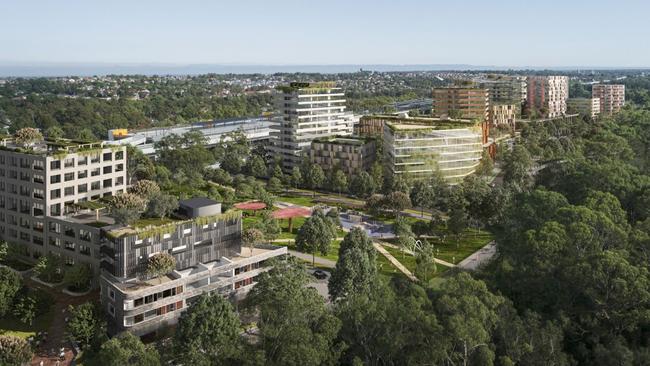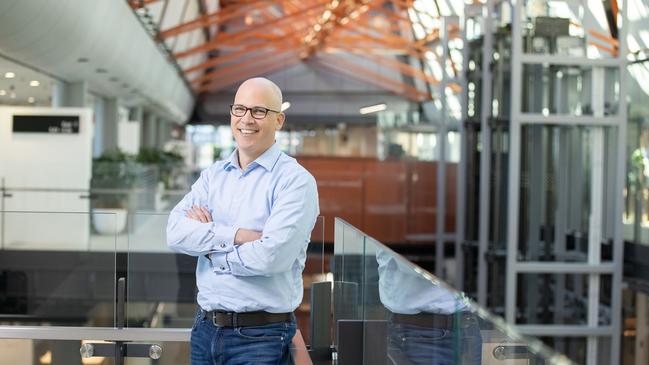Rise of the rentvestor who can’t buy where they want
Unable to buy a home to immediately live in, a generation is instead investing in property which gets a foothold while renting in a more desirable area – and it’s changing the market.

Business
Don't miss out on the headlines from Business. Followed categories will be added to My News.
It’s an investment property rebound with a twist: The post-Covid generation of investors driving a 20 per cent jump in property investment lending in the past 12 months include a substantial group who have little choice.
They can’t afford to by a first home; instead they are investing as a “stepping stone” so they may some day become owner occupiers.
Tagged under the awkward moniker of “rentvesting”, the trend will change the residential investment market as we know it. Sole purpose investors will now hold all the aces, compromised rentvestors will tag along behind and owner occupiers will bring up the rear.
In fact the influence of this new investment force is there for all to see in new data released this week by the nation’s biggest lender, the Commonwealth Bank.
CBA executive general manager of home buying Michael Baumann is intrigued by the latest figures. At first glance he saw familiar statistics.
As might be expected, the inner city suburbs are high on the list for most popular investment areas.
Meanwhile, the average lending amount was $528,000 suggesting buyers in a metropolitan district will face limited choices.
But a closer look at the figures and Baumann detected something else. “What we continued to notice from many borrowers is the inclination to rentvest. That is, buying property where they can afford and renting where they wish to live,” he says.
The latest property borrowing figures suggest this is exactly what is happening. Half of the postcodes are the same ones where investors always put their money. Ignoring low yields, they concentrate on the inner city zones of Sydney and Brisbane.

But also inside the top-10 suburbs in both cities for investors are suburbs which, until very recently, investors feared to tread. These are outer suburbs where investors traditionally experienced slower capital growth than the inner city.
But the difference in these outer suburban postcodes is that the investor or rentvestor can purchase a house instead of an apartment.
For a rentvestor buying an apartment means you may have to sell the apartment and then most likely later buy a stand-alone house, losing a lot in fees during the process.
In buying a suburban house as a first move, the rentvestor has the option to make that house their home when the time is right.
In Sydney the most popular investor postcodes include Blacktown and Hills Shire. In fast-growing Melbourne it includes Casey and Wyndham.
And, as Baumann points out, investors in this situation can have a competitive edge over the home seeker.
When you have an owner occupier up against an investor and the investor is using negative gearing based on current interest rates then “it is the investor that has the purchasing power,” he says.
The big split among property investors
What is emerging now in the investment property market is a two-tiered arrangement between traditional investors driven entirely by profits and agnostic on location against “wannabe” homeowners who are investing, not because they want to, but because they must. It’s their only way into the game.
The rentvestor has no chance in the immediate term of living in the neighbourhood they most desire. That means they are operating in the market under a different imperative. Many will be, in effect, reluctant investors and when they buy they have one eye on the property as a potential future home.
In turn, this will distort the residential investment market.
As it is for all investors the yield (or rental income expressed as a percentage of the property price) from the investment is relevant to the rentvestor but by no means is a deal-breaker. History suggests those investing in outer suburbs will get better yields but lower price appreciation.
Nevertheless, the rentvesting approach is working. Nationwide property prices are up 9 per cent over the past 12 months and at the very least anyone who has taken the plunge as a rentvestor is being rewarded with capital appreciation along with hefty negative gearing opportunities.
In fact our high rates, and the growing prospect that they will stay higher for longer than expected, underpins the rentvesting model.
As CBA’s own economics unit points out, Australian households are “among the most indebted in the world. This makes them more exposed to rate increases than households in other markets.”
For example, in the current interest rate cycle the average Australian mortgage has put on 3.25 per cent while the US mortgage has only put on 0.5 per cent
Of course, the elevated level of borrowing rates means the rentvestor gets a bigger negative gearing tax deduction from the loss relating to the investment property and its management – and the prospect of rates staying higher for longer means the rentvestor’s competitive edge stays in place for longer too.
Keep in mind that both US and local economic conditions continue to suggest that rates will remain high. There are several economist who now believe investors might as well forget any reduction in borrowing costs this calendar year. As HSBC chief economist Australia Paul Bloxham put it after this week’s CPI figures: “With inflation still above target and falling slowly along with a jobs market that is loosening only very gradually, we see rate cuts as unlikely in 2024.”
Profile of the rentvestor
So what does the post-Covid generation of property investors look like? They are millennials – naturally enough the generation that was born between 1981 and 1996 have now come to the fore and take up nearly half of all investing activity (46) per cent.
Baumann notes this post-Covid generation of investors is operating alone – one in three buy their property as individuals.
The average age of a property investor in 2024 is 43. But that tells us little since the market is split. It is most likely traditional investors are older and the rentvestors are younger.
They don’t roam far from the major cities. Despite regional prices running ahead of city prices over the last quarter, rentvestors stick close to metropolitan Australia.
Even the powerful 20 per cent lift in prices in Perth over the past year does no seem to have attracted them.
And of course they are likely to be the first generation of property investors that would much rather be owner-occupiers but that, for many, is now a distant prospect.
James Kirby hosts the twice weekly Money Puzzle podcast
More Coverage
Originally published as Rise of the rentvestor who can’t buy where they want





